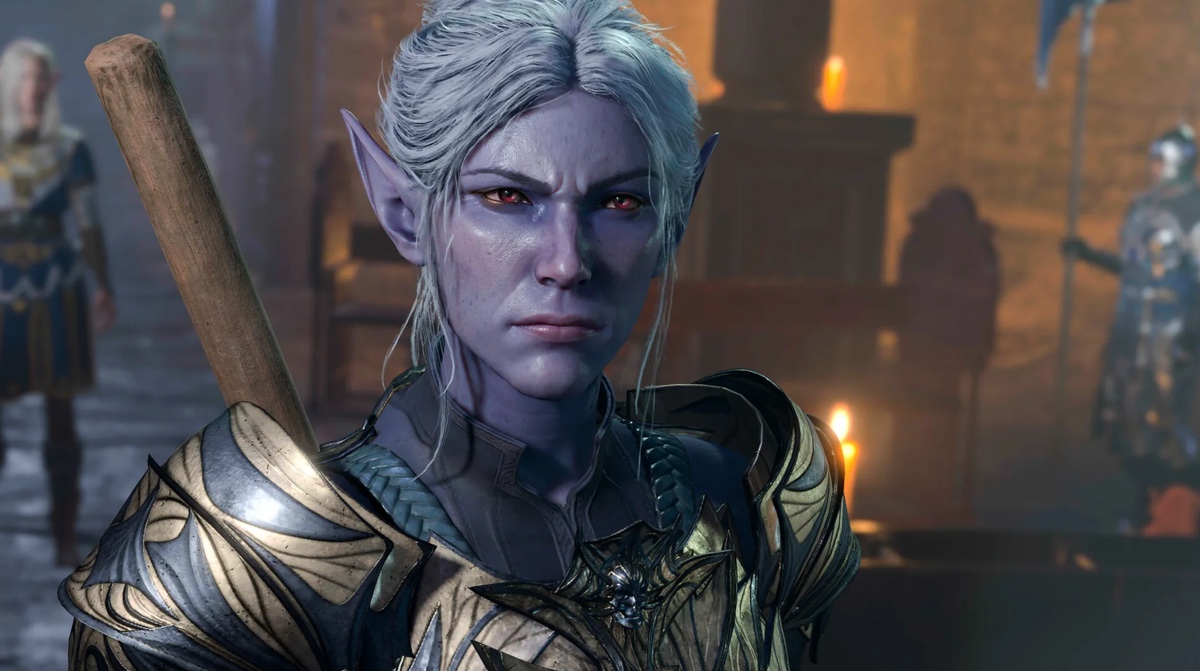How Exactly Does ‘Baldur’s Gate 3’ Fit Into the World of D&D?
Down, down, down by the river...

Masterfully combining turn-based tabletop mechanics, stunning visuals, grade-A voice acting, and top-tier character writing, Baldur’s Gate 3 has rightfully dominated 2023 as one of the year’s best gaming releases.
While there’s a lot to love about Baldur’s Gate 3, one of the game’s biggest draws is its ties to Dungeons and Dragons. BG3 employs races, gods, locations, and even a few characters from the classic tabletop entry. But while most fans probably already know BG3 uses the lore of D&D, what’s less clear is how the characters and events of the game relate to greater worldbuilding—is Baldur’s Gate 3 canon to D&D?
What is the canon of Baldur’s Gate?
Since the release of the first game in 1998, the Baldur’s Gate franchise has been set in the Forgotten Realms campaign setting from Dungeons and Dragons. The first installment establishes a player character known as Gorion’s Ward, who journeys across Faerûn’s Sword Coast fighting monsters, gathering allies, and uncovering their personal history. Along the way, players cross paths with iconic characters like Minsc and Jaheira and organizations like the Zhentarim and the Harpers.
It’s an in-depth, continuous story that takes one of the many settings established in Dungeons and Dragons and populates it with a whole slew of original characters/creations, giving the Baldur’s Gate 3 games an extensive canon that can be traced chronologically through all the games. The Baldur’s Gate games are so closely linked that players had the option to import their character from Baldur’s Gate into Baldur’s Gate 2, and (without spoiling) characters who appear in previous installments do pop up in Baldur’s Gate 3, having been directly impacted by the events of previous games.
How does Baldur’s Gate 3 tie in to D&D?
But while the chronology and lore of Baldur’s Gate 3 is extremely tight and self-contained, it also takes place in a world with a vast, nearly unending canon of its own—Wizards of the Coast’s Forgotten Realms setting from Dungeons and Dragons. Sure, specific characters, cities, or plot beats are game-specific, but the stories of the Baldur’s Gate games are just a few of countless ongoing adventures across the massive Forgotten Realms setting, which begs the question—is Baldur’s Gate 3 canon to D&D?
It may come as a surprise to some fans, but Baldur’s Gate 3 is, in fact, canon to the world of Dungeons and Dragons—in fact, all three games are. Though the third Baldur’s Gate may take place nearly 120 years after the first two games, and is made by an entirely different developer, Larian still explicitly made the effort to keep Baldur’s Gate in line with D&D chronology.
What about Baldur’s Gate 3‘s ending?
But for players who may want to integrate the events/characters of Baldur’s Gate 3 into their home campaigns, there’s still one major issue—how Baldur’s Gate 3 ends. Because the game’s narrative is entirely influenced by the choices of the players, Baldur’s Gate 3 has countless endings with all sorts of possible outcomes—Netherese annihilation, ascension to Godhood, and destruction of the Netherbrain, to name a few. It makes for an immersive gaming experience, but also makes integrating the game into the world of D&D tricky, as there can only be one version of events in Baldur’s Gate 3 that D&D follows.
Currently, it’s unknown as to which ending of Baldur’s Gate 3 is canon to Dungeons & Dragons—but luckily for fans, there have been official Baldur’s Gate campaign books based on the setting (like 2019’s Descent Into Avernus, which takes place concurrently with BG3) that allow players to explore the city for themselves.
(featured image: Baldur’s Gate 3)
Have a tip we should know? tips@themarysue.com